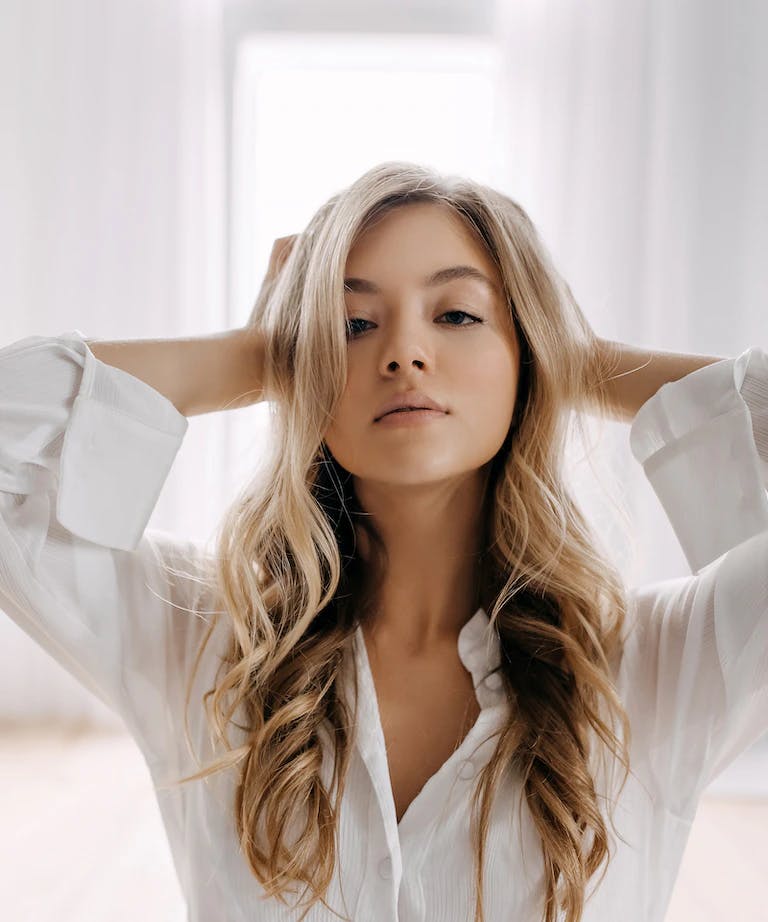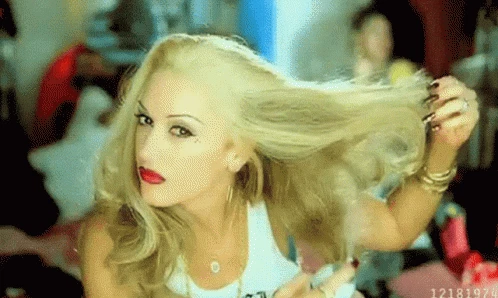The Inconvenient Truth About Dry Shampoo
I hate to be the one to break it to you, but your beauty routine time-saver is doing you dirty.

We’ve all been there: Your alarm goes off on wash day, and suddenly, that snooze button becomes much more appealing than freshly cleaned hair. As tempting as it can be to stay in your cocoon and stretch out that wash one more day by spritzing your locks with dry shampoo, resist the urge. In addition to being packed with worrisome ingredients, your traditional dry shampoo might be throwing your scalp into a vicious cycle of oiliness and even causing dandruff and hair loss.
So what’s a sleepy busy girl to do? Let’s explore the good, the bad, and the ugly of the dry shampoo world.
Evie's product selections are curated by the editorial team. If you buy something through our links, we may earn an affiliate commission, at no cost to you. We only recommend products we genuinely love.
The Bad: Carcinogens
We’re going out of order, but let’s first jump into why traditional dry shampoo has gained a bad rap in recent years.
In 2022, a handful of hair care brands had to recall their dry shampoo lines because they contained high levels of benzene – a compound that has been linked to several different forms of cancer, including leukemia, blood cancer, and bone marrow cancer, through inhalation and contact with the skin. The recall was prompted by the results of a study done by Valisure that measured carcinogen levels in 34 dry shampoos. While it seems like nearly everything is linked to cancer these days, the carcinogen levels in some major dry shampoo brands are too concerning to shrug off. Of the 34 dry shampoos tested, 70% showed high levels of benzene. And in some cases, it wasn’t just a small amount, either. In fact, 11 of the 34 shampoos tested contained 10 times the FDA limit of benzene. Yikes.

The Ugly: The Oily Scalp Conundrum
Putting the cancer risks aside, here’s another ugly truth about dry shampoo: It’s not actually shampoo at all, since it doesn’t actually clean your hair. Instead, dry shampoo absorbs the oil on your scalp to make it less noticeable. But there’s nothing washing the oil away. That means even after you use dry shampoo, you still have oil on your scalp (albeit less than before you used the dry shampoo), in addition to the dry shampoo residue. This gunks up your follicles with a bunch of heavy ingredients, which can negatively affect hair growth.

Additionally, dry shampoo dries out your scalp over time. This can make your hair more fragile, which makes it more prone to breakage. That’s also why overusing dry shampoo can lead to flakiness, dandruff, and – in extreme cases – hair loss. This breakage is especially prevalent along the front section of your hair, which is likely already more delicate since that’s the area we tend to focus on most while heat styling and coloring (money piece, anyone?).
Using dry shampoo excessively can also lead to buildup on your scalp. That’s because, again, the product is just sitting at your roots and not being rinsed out. Over time, this buildup can make your hair look greasy and heavy.
The Good: Products That Actually Work
By now, it’s probably looking like becoming less reliant on dry shampoo is key. But you also still want voluminous, fresh-looking locks without having to wash too often. So how do you get your hair to the point where you don’t need as many refreshers between wash days?
The trick is to keep your scalp clean. One way to do that is by using fewer hair products in general to avoid buildup on your scalp. Oftentimes using too much hair product can weigh your hair down, which can make it look more oily than it actually is. That, in turn, can make you think you need to refresh your hair with dry shampoo, which only contributes to the problem. So you can see how this vicious cycle continues. To avoid the weighed-down look, keep your hair routine simple – only use a handful of products that truly work for your hair, and try not to use too much.

While it’s true that using fewer products is necessary to avoid buildup, sometimes your scalp needs a good refresher. For that reason, find a product that gives your scalp a good, healthy cleaning. This can include a homemade apple cider vinegar rinse, or products specifically designed to eliminate residue, such as clarifying shampoos and scrubs. Here are some of our favorites:
Ouai Detox Shampoo, $32

Kristen Ess Hair Deep Clean Clarifying Shampoo, $13

Olaplex No 4C Bond Maintenance Clarifying Shampoo, $30

OGX Extra Strength Refreshing Scalp Daily Shampoo, $9

Carter + Jane Scalpfix, $32

Hask Tea Tree Oil Rosemary Pre-Shampoo Scalp Scrub, $7

Monat Scalp Purifying Scrub, $45

Perfect Clean 2-In-1 Scalp Scrub & Clarifying Shampoo, $19

Dry Shampoo as a Last Resort
Let’s face it: Even after you do the work to get your scalp in better shape, there will still be days when your hair needs the quick pick-me-up that only dry shampoo can provide, so it’s a good idea to have a follicle-friendly brand in your arsenal.
The good news is there are plenty of safer, healthier options on the market. Here are some cleaner, non-irritating dry shampoos – i.e., brands that aren’t full of junk or cancer-causing ingredients (because really, that shouldn’t be too much to ask).
MISSIO Hair Coconut Cleansing Powder, $30

Acure Dry Shampoo, $11

Primally Pure Natural Dry Shampoo, $28

Prose Custom Dry Shampoo, $28

Briogeo Scalp Revival Charcoal + Biotin Dry Shampoo, $25

Rossano Ferretti Parma Dry Shampoo Cream, $20

Closing Thoughts
For many of us, dry shampoo is a favorite time-saving hack for effortless non-greasy hair in seconds. But with some concerning information coming out about popular brands, it’s important to know the facts and be mindful about what you’re spraying on your locks.
Support our cause and help women reclaim their femininity by subscribing today.